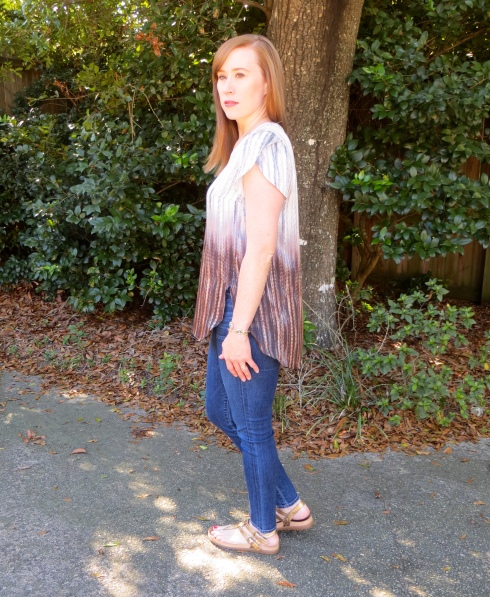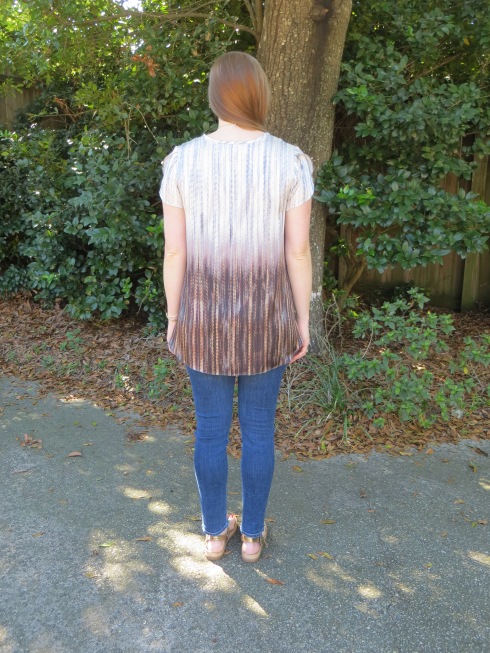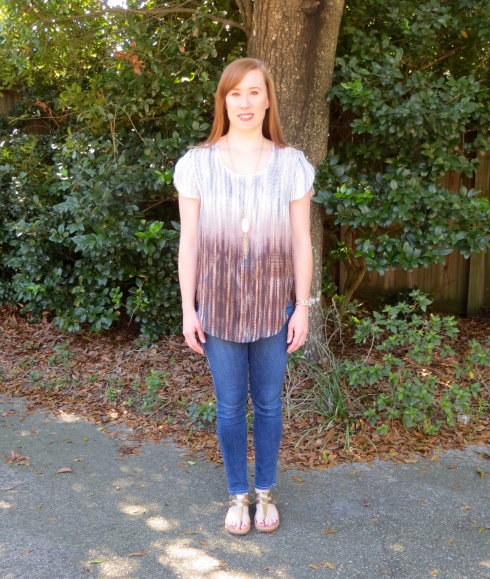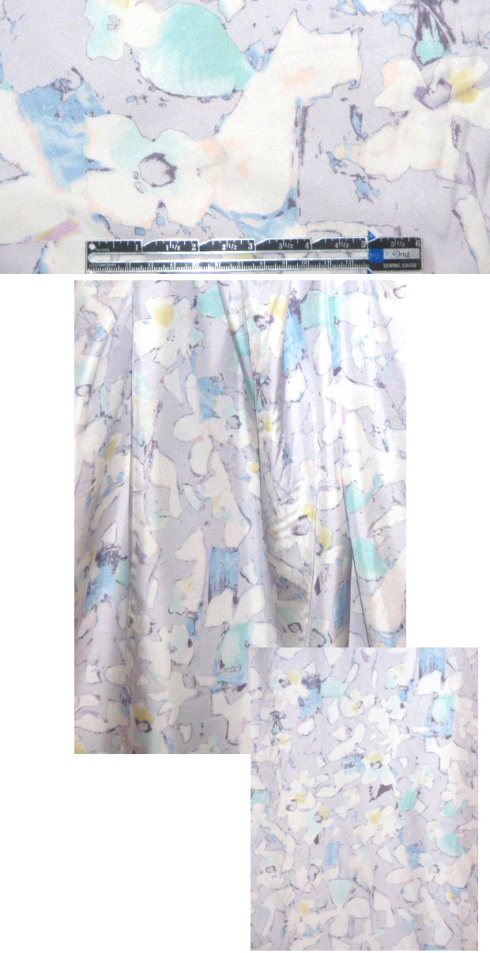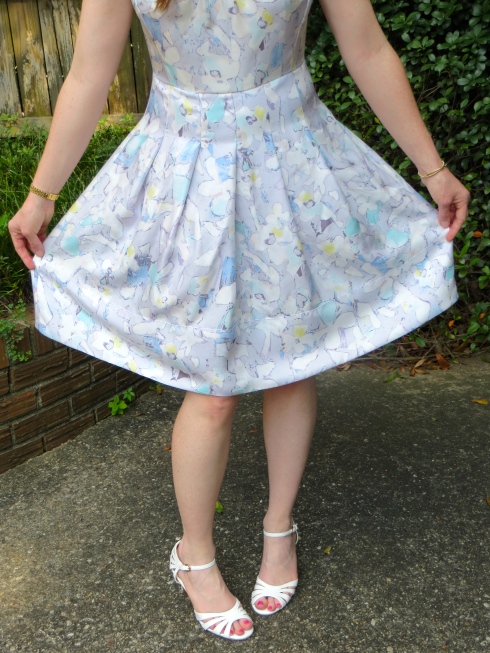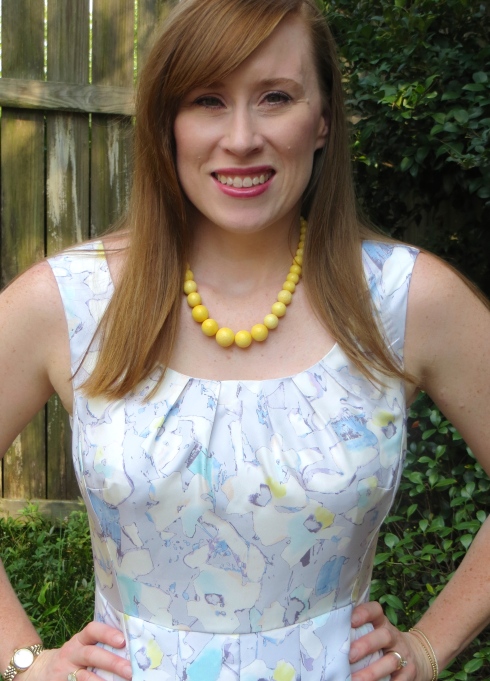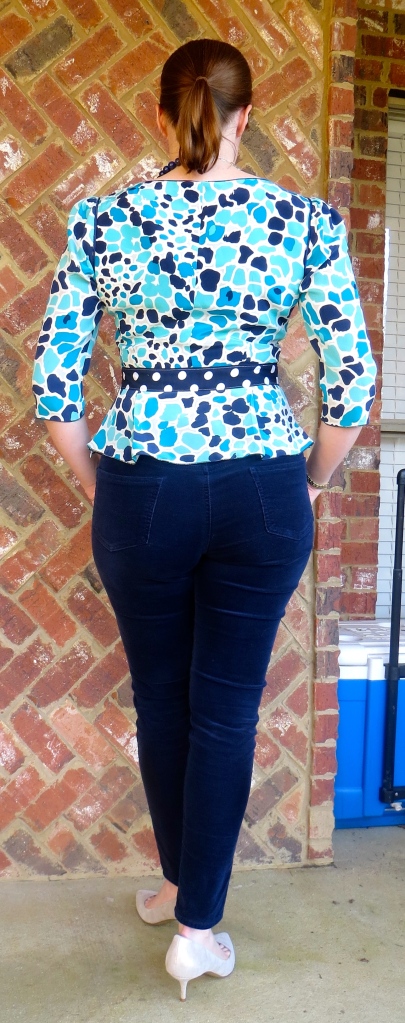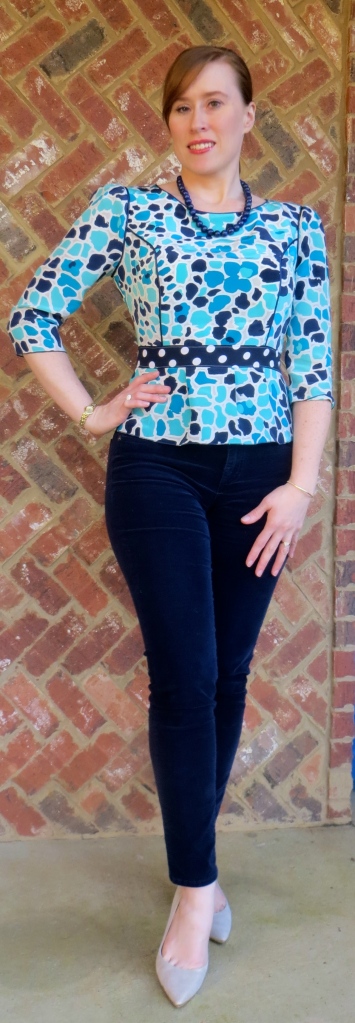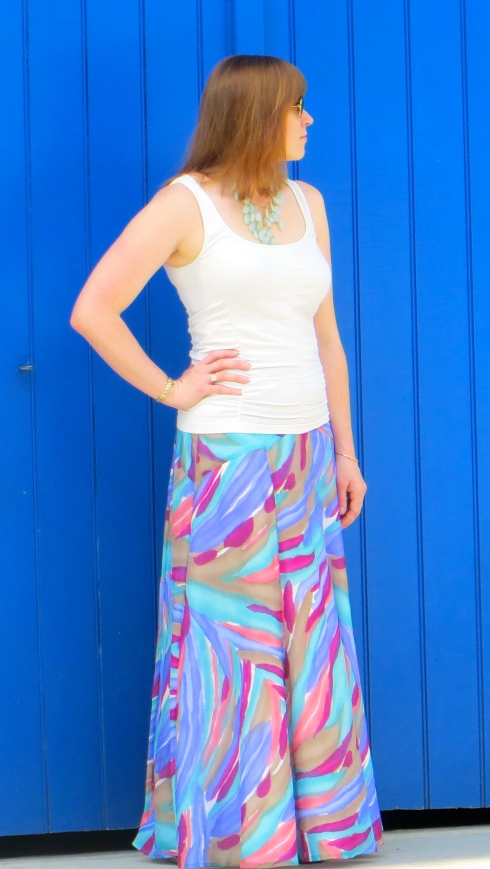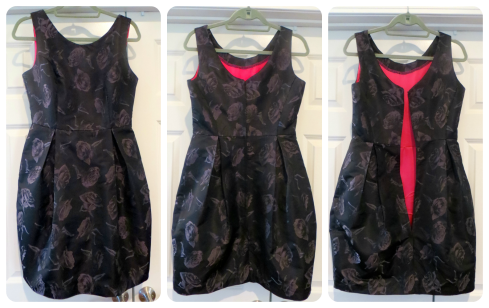Happy Sunday, everyone! I hope your weekend has been a fun and productive one. Mine has been very busy but I have been hammering away on the sewing machine as much as possible. A few weeks ago, my husband and I attended the annual fundraiser gala for the hospital where I have privileges. I always look forward to this event because I love any excuse to get dressed up and be “fancy.”
The event takes place at the beautiful Marriott Grand Hotel, right on the shore of Mobile Bay. I love visiting the Grand Hotel (and have since childhood), because it is old, Southern, and charming. There is lush vegetation everywhere, the staff is friendly and gracious, and the whole atmosphere is very relaxed.

As I have been honing my sewing skills in recent years, I have begun to enjoy creating outfits for specific occasions, and the Grand Summer Ball was the perfect opportunity. I first started dreaming up my ensemble around the end of last year but didn’t actually finalize my plans until about two months before the ball. But no matter how much I plan and brainstorm in advance, I was still stitching a hem and sewing in the zipper the day of the event (but with plenty of time to spare to get ready).
Want to see a picture of my handsome date before I go into the details of the outfit (and I might get a little wordy)?

Alright, now on to what I wore. First, I decided I wanted to wear separates this year — long skirt and top. I started with Vogue 1310, a Chado Ralph Rucci number. You will notice that my colors are similar to those in the pattern photo; I think this is why I initially gravitated toward this pattern. I muslined the skirt and it was awful! The wrap tie created a huge poof across my midsection and it just wasn’t flattering.

So I decided to draft my own skirt. I wanted something that would skim my hips then flare out at the bottom. I relied heavily on my copy of Patternmaking for Fashion Design (given to me by a sweet friend who was a fashion major). I started with creating a basic one-dart skirt sloper (one dart in front and one in back). Then I closed the darts and transferred the fullness to the hemline, pivoting at a point around knee-level.

I also added a godet to the back center seam for extra fullness. I decided to create the V-shaped yoke as an added design feature. I cut the yoke on the bias thinking it would skim my hips better but I think this just created more trouble with ripply seams (even though I interfaced the seam lines). I added a simple 1″ waistband and handpicked a centered side zipper. The clincher with the skirt came when I realized that somehow part of the back hemline was 2″ shorter than the front, resulting in a skirt that hit at my ankle instead of grazing the floor like I had planned. Overall, the skirt was wearable and served it purpose, but it isn’t my most favorite make and all of its silk may get repurposed at a future date.
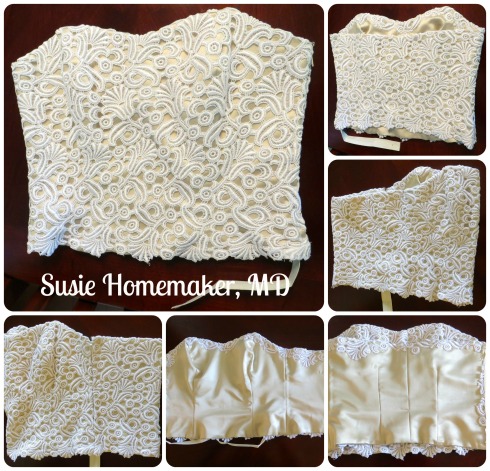
On to the top. It is my favorite thing that I have sewn so far and I am so proud of it! I started with the bodice of Vogue 8849 and made 4 muslins before I got the fit just right. For construction, I referenced this blog post by Ann of Gorgeous Fabrics, who described her experience of sewing a lace bustier during a Susan Khalje class.
I started with a base shell of some sort of poly satin. Then I constructed my boning layer from muslin and inserted 6 channels for spiral steel boning along the bust princess seam lines, back dart lines, and side seam lines. I used boning casing to house the boning and these supplies came from Corset Making Supplies. I then hand-basted the muslin to the shell fabric and treated them as one for the duration of the construction.
Next, I cut my lining from the same fabric as my outer shell, then sewed the lining to the shell, right sides together, along the top seam. then I inserted the boning and sewed the lining to the shell right sides together along the bottom seam. Once turned right side out, I had clean-finished seams along the top and bottom and two open ends. These open ends were important and you will see why in a minute.
Next, I placed the bustier on my dressform for draping the lace. This is the most use I have ever gotten out of my form. I decided I wanted the lace edge to run along the bottom edge of the bustier, so I positioned the lace as such and started pinning it to the shell layer underneath, easing as I went. Because lace is very moldable, you can shape it over the curves of your body without having to use seams and darts. If you look closely at my detail photos, you will see the seams of the bustier shell underneath but no seams in the lace. I was very glad it worked like this because I was terrified of having to match lace patterns!
For the top of the bustier, I folded the lace over to the inside and did not try to use the lace’s border here. Next, I started tacking the lace to the shell/muslin layer by hand, using the open ends to access the area between the shell and lining. This was the most time-consuming part but also the most enjoyable. I have never been much of a hand sewer but I thoroughly enjoyed the process of making this bustier. I worked on my handstitching in the evenings, at the office between patients, and any other time I could squeeze in. All total, I probably spent 4 hours tacking the lace down.

Next, I hand-picked a centered side seam zipper. I used the advice in Ann’s blog post and used a full-length dress zipper instead of a separating zipper. The longer zipper makes it easier to get in and out of the bustier and to zip yourself up in it without help, and the long tail is tucked up inside and snapped to the zipper tape. The bustier was finished off with a hook and eye at the top of the zipper.
And let me tell you how marvelous it was to wear! I didn’t spend all night hiking my top up or worrying about wardrobe malfunctions. I didn’t put a waist stay in yet, but I plan to add one soon. Photos from the event can be found here, here, here (with my sis), and here. I purchased my garnet necklace from the Etsy seller Alison Storry.
My fabrics were all purchased locally at Ely’s Fabric Warehouse in Mobile, Alabama. They have a nice selection of formal wear fabrics and lace. The skirt is made from a beautiful crimson silk charmeuse and the bustier’s shell and lining are poly satin and the lace is a beautiful, heavier-weight lace with a finished border along both edges (sorry I don’t know my lace terms).
While I will have to revisit my skirt drafting skills, I will definitely be making more iterations of the bustier top in both casual and dress versions. I think even this bustier can be dressed down a bit, perhaps with jeans for date night or like I wore it today to church.

If you’re still there, thanks for reading about my mini-venture into couture sewing. Stay tuned for more!
Tags: bustier, fabric, formalwear, lace, silk, skirt, vogue


